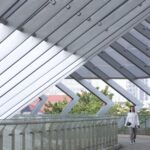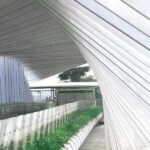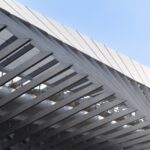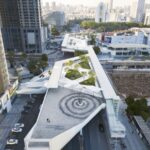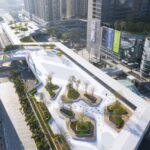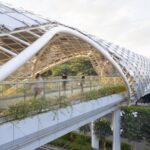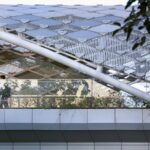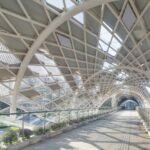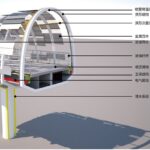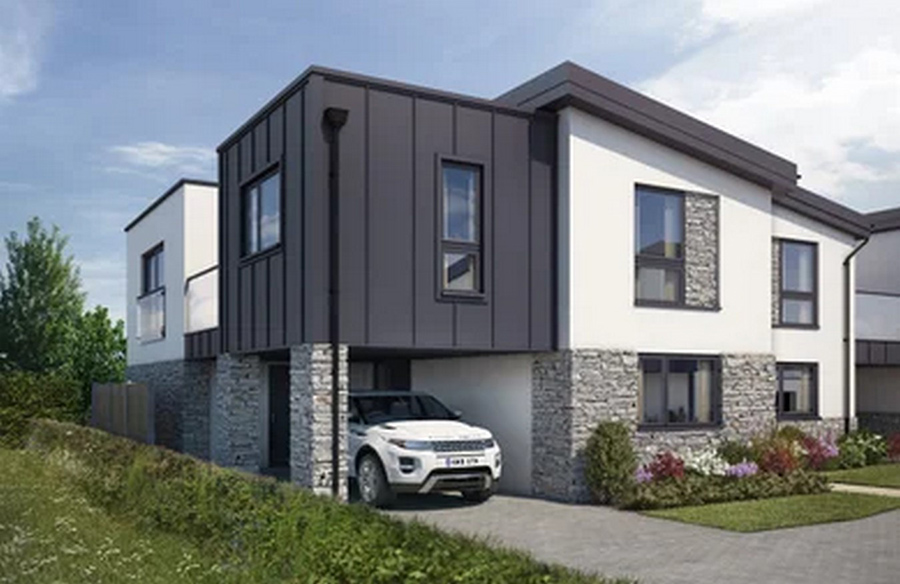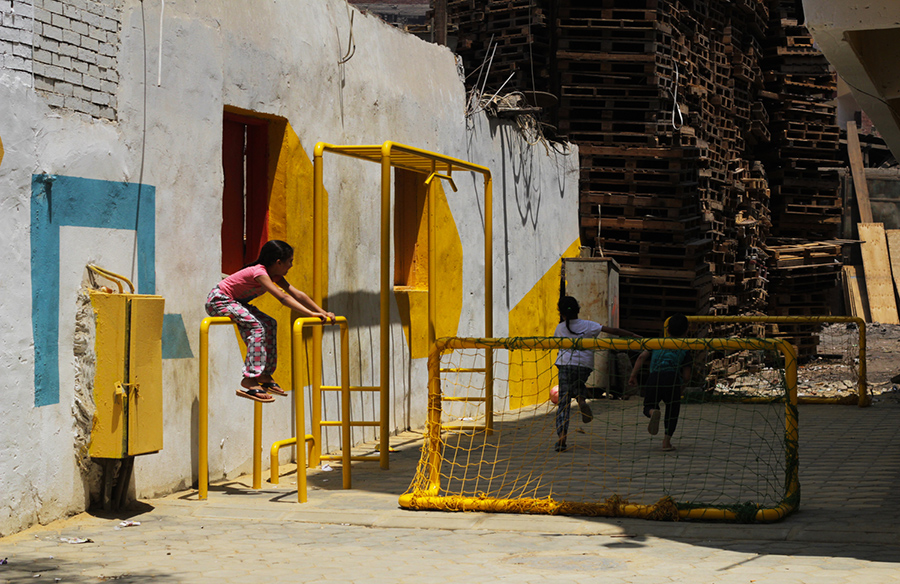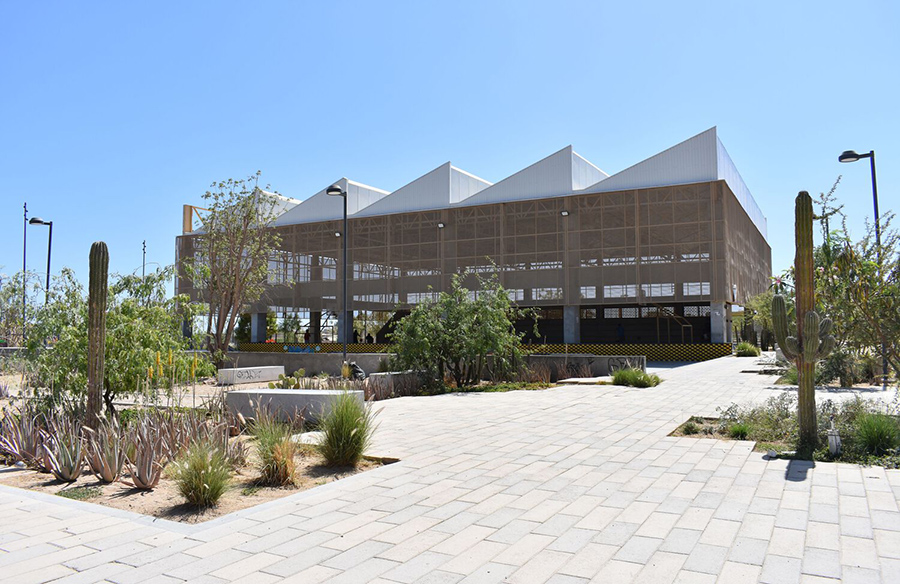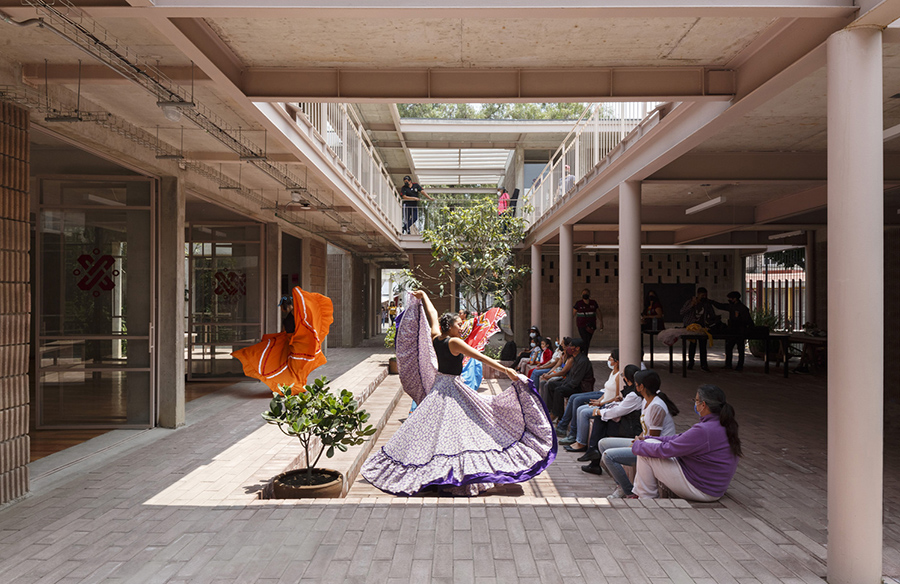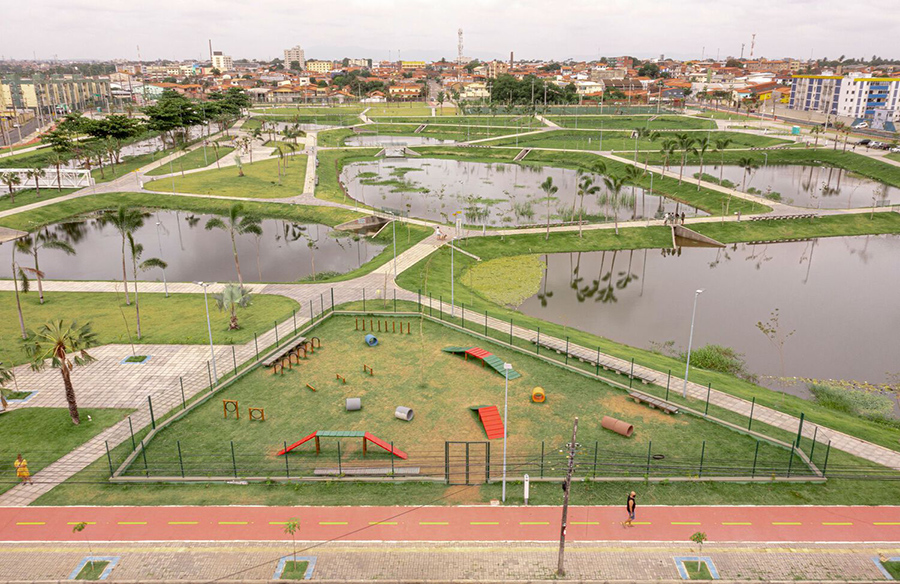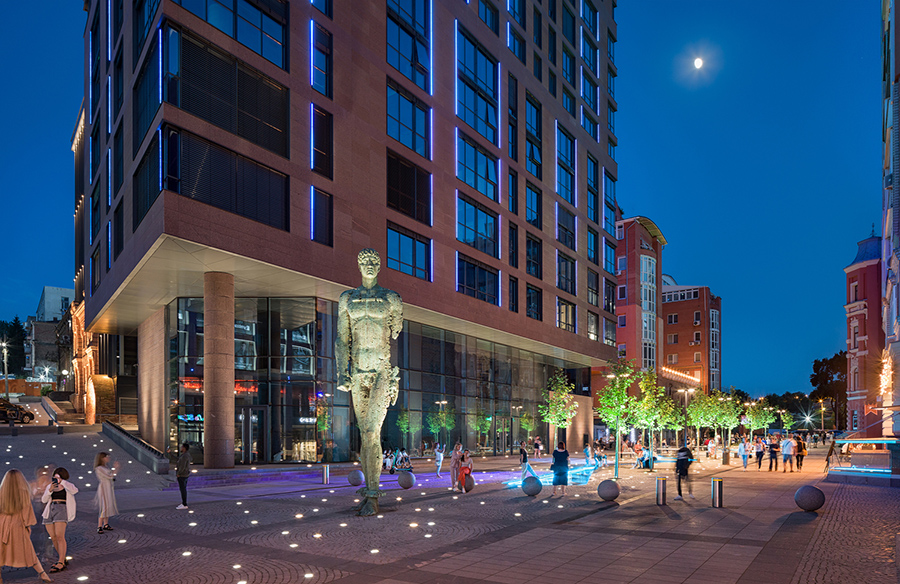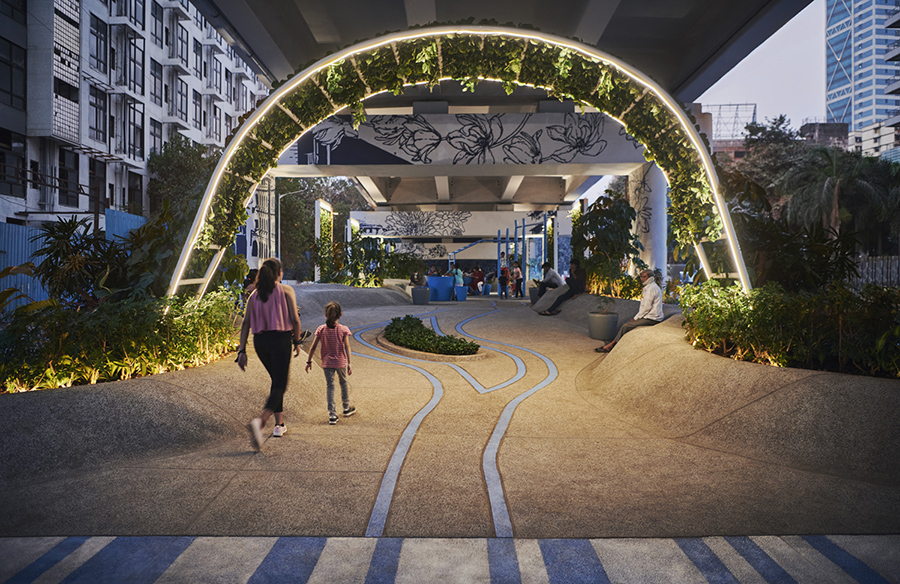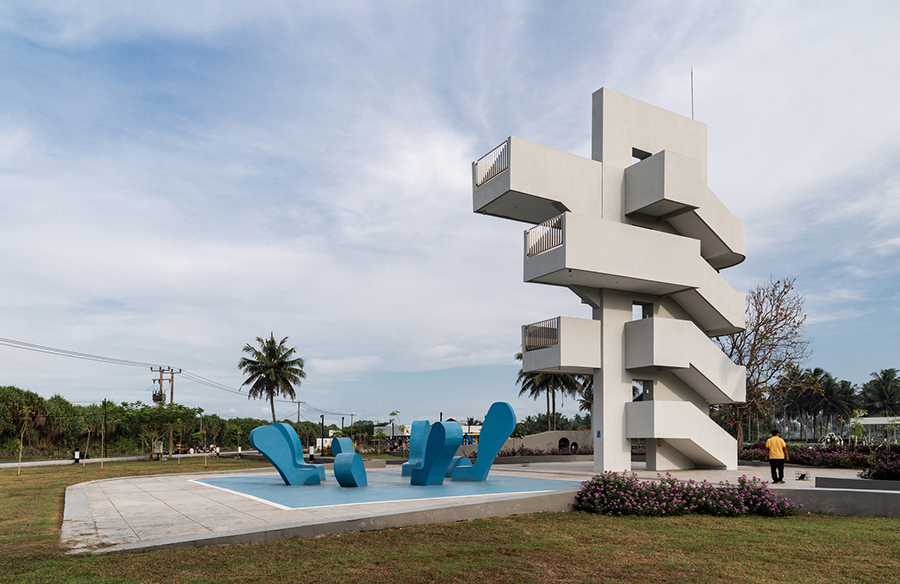In Shenzhen, China, the Longgang district stands as a focal point for innovative urban planning and design. The Longgang Core Area Overpasses project, spearheaded by FCHA, represents a pioneering initiative in urban connectivity and pedestrian infrastructure. Here’s an overview of this transformative endeavor:
Project Overview
The Longgang Core Area Overpasses project is a pivotal component of Shenzhen’s urban redevelopment efforts, aiming to integrate rail transit, bus networks, and pedestrian pathways. Spanning an area of 21,000 square meters, the project comprises nine overpasses and weatherproof corridors strategically positioned across the central urban area of Longgang. These structures serve as vital connectors, linking subway stations, bus stops, commercial hubs, and residential neighborhoods, thereby fostering seamless mobility and community interaction.
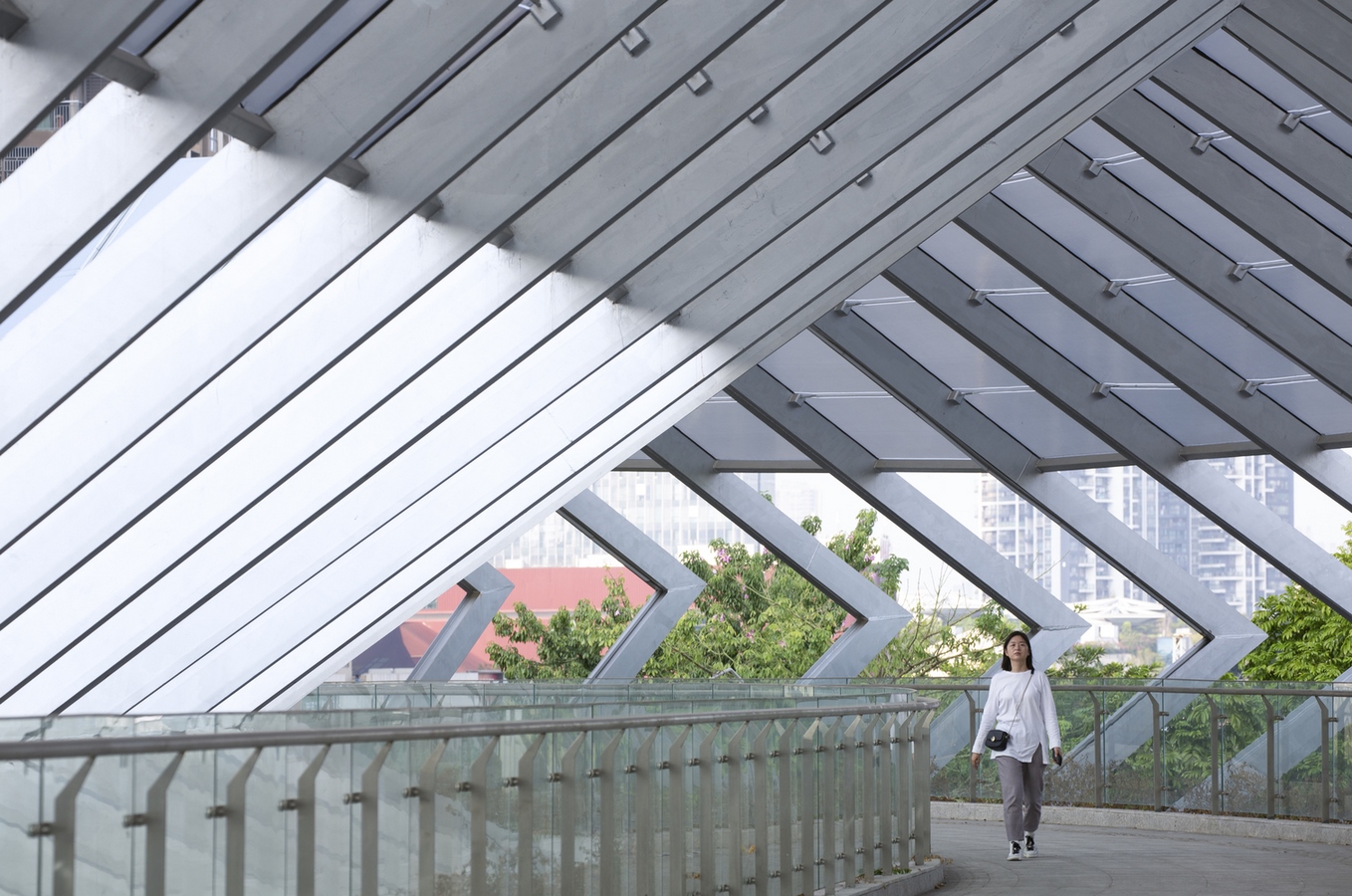
Design Concept: Inspired by Tradition and Innovation
Drawing inspiration from the rich cultural heritage of China, particularly the symbolism of the dragon, the design concept of the overpasses embodies a fusion of tradition and innovation. Similar to the dynamic and adaptive nature of dragons, the overpasses exhibit flexibility and versatility in their design, adapting to varying site conditions and functional requirements. The project’s modular design approach, reminiscent of the fluid movements of dragon dance, allows for the creation of distinct bridge types tailored to specific urban contexts.
Bridge Types and Features
The Longgang Core Area Overpasses feature four primary bridge types, each designed to address specific urban challenges and spatial requirements:
- Rotating Bridge: Designed for curved routes, these bridges incorporate rotating mechanisms to navigate changes in direction. Equipped with semi-permeable membranes and LED lighting, they offer enhanced comfort and visual appeal, exemplified by Bridge No. 1 connecting Jixiang Metro Station to Tianyu Residential Area.
- Extension Bridge: Ideal for straight pathways, these bridges feature undulating curves that break the monotony of linear structures. Comprising a mix of materials, including perforated plates and glass, they provide sunshade, rain protection, and aesthetic variation. Bridge No. 3, located on Longxiang Avenue, exemplifies this design approach.
- Waving Bridge: These bridges employ undulating steel frames to accommodate changes in elevation, enabling flexible integration within urban landscapes. With their rhythmic curves, they create engaging pedestrian experiences while navigating vertical obstacles. Bridge No. 6, connecting Times Square and Longcheng Square subway station, showcases this design innovation.
- Platform Bridge: Serving as multifunctional urban platforms, these bridges transcend traditional pedestrian pathways, offering elevated spaces for leisure and social interaction. They represent the evolution of urban infrastructure from linear structures to dynamic spatial experiences. The No. 2 Connecting Corridor, known as the “Floating Islands,” exemplifies this concept, linking commercial complexes and residential areas.
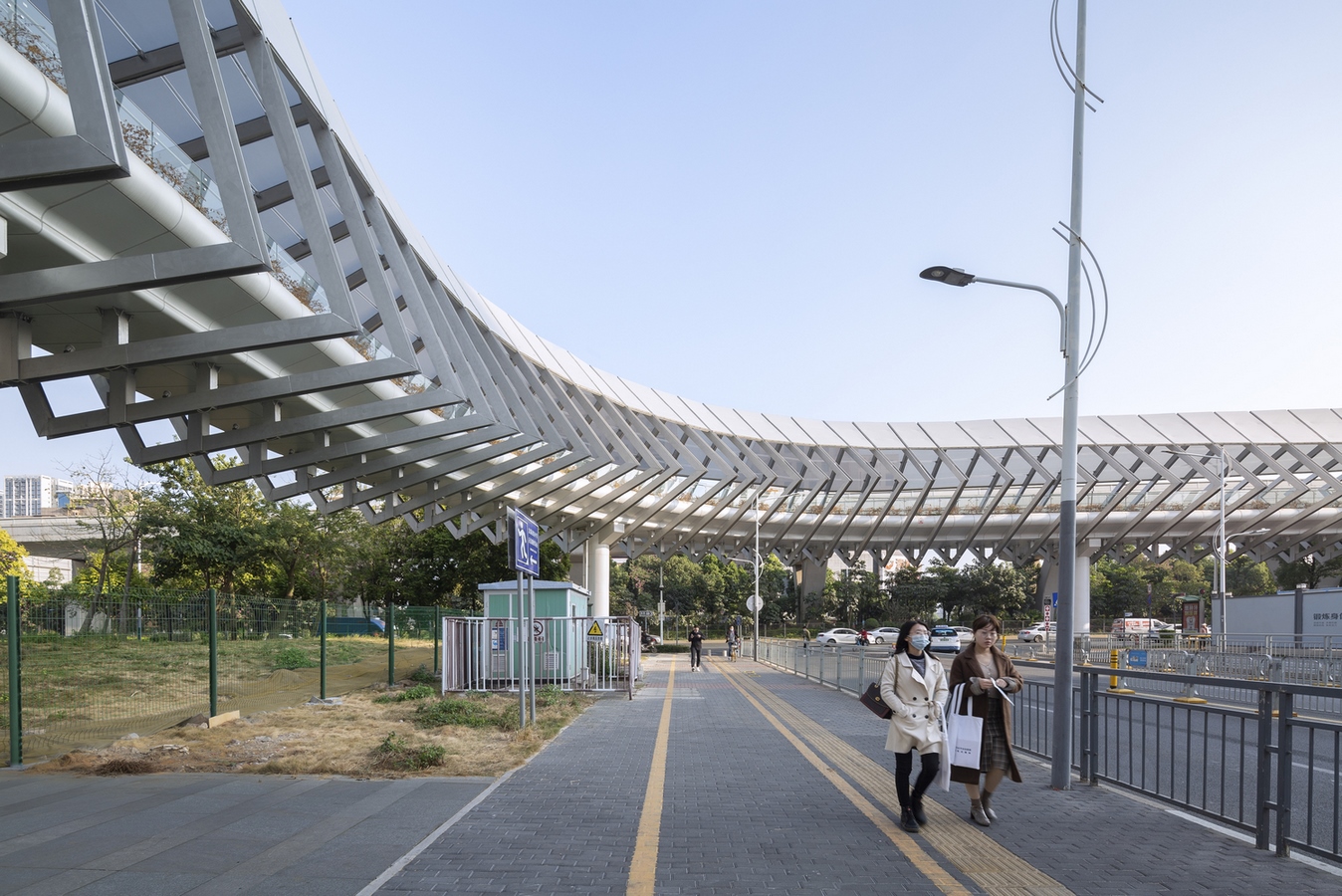
Conclusion: Advancing Urban Connectivity
The Longgang Core Area Overpasses project exemplifies a bold vision for urban connectivity and pedestrian mobility. By seamlessly integrating transportation systems and public spaces, the project enhances the quality of urban life while promoting sustainable development. As Shenzhen continues to evolve as a global city, initiatives like this pave the way for innovative urban design and community-centered planning, shaping the future of urban living in China and beyond.


